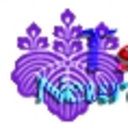Current practices and future directions of therapeutic strategy in glioblastoma: survival benefit and indication of BNCT.
Açar sözlər
Mücərrəd
Since 1998, we are performing clinical studies on treatment of GBM using conventional fractionated photon radiation therapy (CRT), proton beam therapy (PBT) or boron neutron capture therapy (BNCT). We investigated whether these radiation modalities improves the survival of patients with GBM. Sixty-eight cases of newly diagnosed GBM have been treated in our institution. After surgery, radiation therapy was performed using CRT with a dose of 60.0-61.2 Gy (n=36), hyperfractionated PBT concomitant with fractionated photon irradiation with a total dose of 96.6 Gy (n=17), or a single fraction of BNCT (n=15). In PBT, the surrounding volume of 2 cm from main tumor mass and the volume of perifocal edema were irradiated at dose of 75.6 and 60 Gy, respectively. The median OS time of the case series of BNCT for GBM has been reported as 13-20.7 M. In this study, the median OS and median time to MR change (TTM) for all patients were 25.7 and 11.9 M, respectively. The 1- and 2-year survival rates were 85.7% and 45.5%, respectively. On the other hand, in the patients who underwent CRT and ACNU-based chemotherapy, OS and 2-year survival rate were 14.2M and 17.9%, respectively. In the patients who underwent high-dose PBT, OS and 2-year survival rate were 21.3M and 38.5%, respectively. The present small case series of selected patients showed survival benefit after BNCT. The comparison using previously reported prognostic factor-based classifications suggest that outcome of BNCT in terms of survival appeared to have non-inferiority compared to the standard therapy. With respect to the case series as a high-dose radiation trial, the outcome (OS: 9.5-25 M) of previously reported may still be comparable to that of BNCT. Randomized trials of comparably selected patients are required to demonstrate conclusively that prolonged survival is a result of this tumor-selective radiotherapy.





